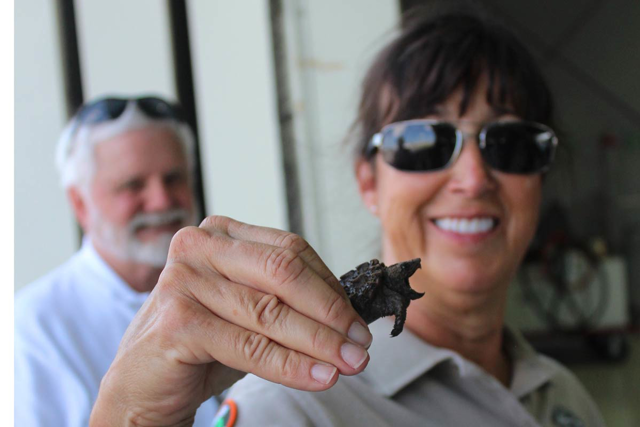
Species Information
Alligator snapping turtles, Macrochelys temminckii, are the largest freshwater turtle in North America and can be distinguished from other snapping turtles by three large ridges along the back of their shell, as well as their large head, powerful jaws and substantial shell size.
Historically, alligator snapping turtles spanned across 14 states in the southeastern United States. Between 1960 and 1970, the population was decimated due to increased levels of commercial harvest. Unlike common snapping turtles, alligator snapping turtles do not produce large clutches of eggs, therefore the species could not handle the hunting pressure. Today, the species is protected from commercial harvesting, however, the damage to their population is extensive.
- Largest freshwater turtle in North America
- Can weigh up to 200 pounds
- Lifespan of 20-70 years in the wild
- Males spend most of their time in the water, while females can be seen in the water or nesting on land

IUCN Classified: Vulnerable
The TN Wildlife Action Plan also identifies the Alligator Snapping Turtle as a species of greatest conservation need, and the Tennessee Wildlife Resource Agency (TWRA) lists it as “In Need of Management.” Current threats include habitat destruction, egg predation and low survival of babies as they are food for many species.



